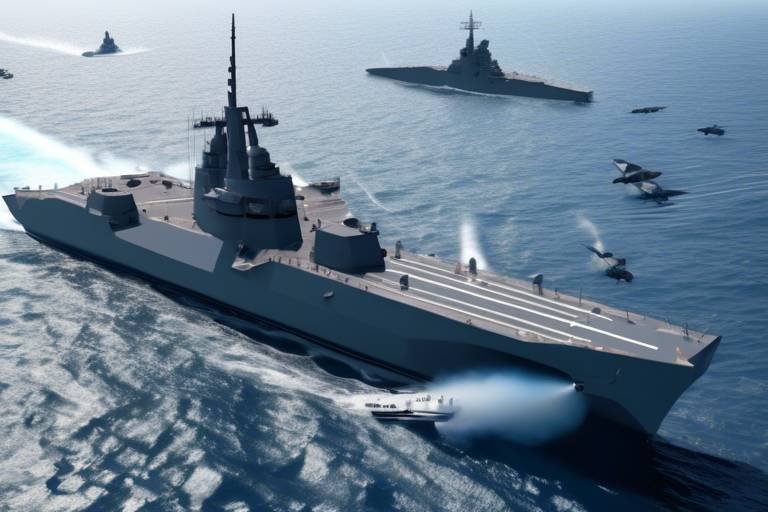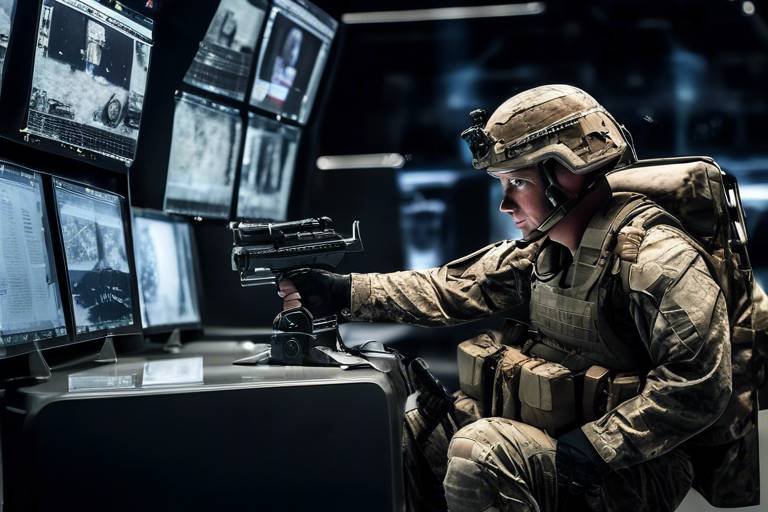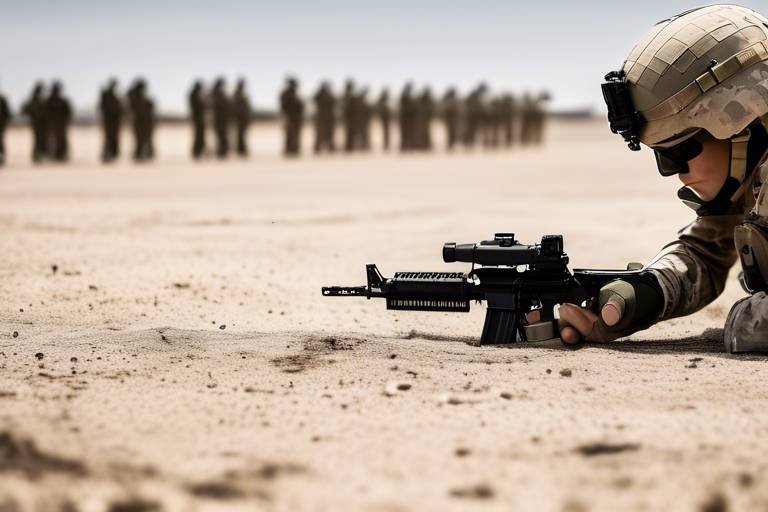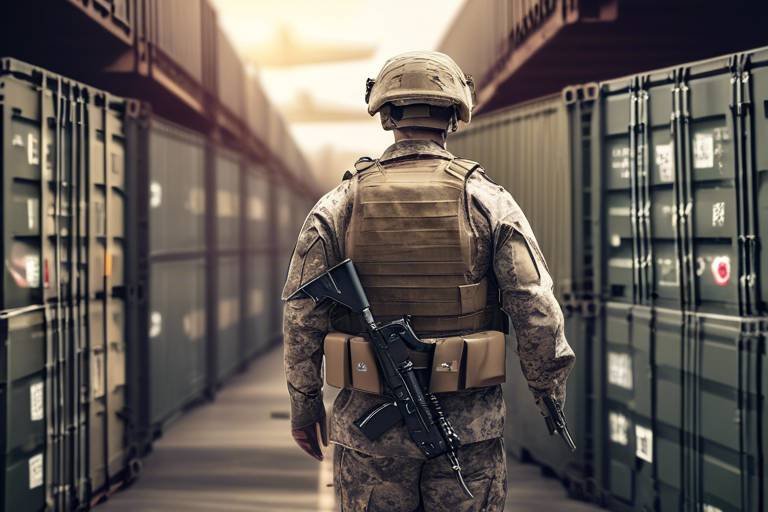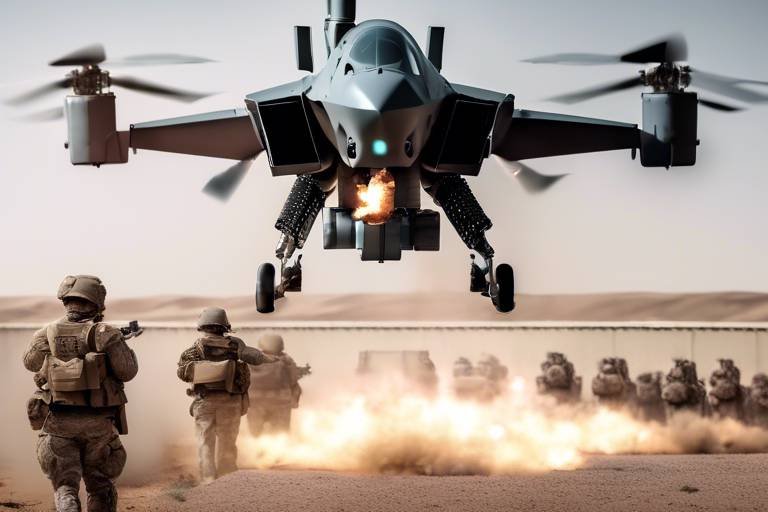Innovations in Counterinsurgency Technologies
In today's rapidly evolving world, the landscape of military operations is undergoing a seismic shift, particularly in the realm of counterinsurgency. The modern battlefield is no longer confined to traditional warfare; it has transformed into a complex environment where insurgent threats can emerge from anywhere. To effectively combat these challenges, military forces are increasingly relying on innovative technologies that enhance their operational capabilities and strategic planning. This article delves into the latest advancements in counterinsurgency technologies, highlighting how they improve military effectiveness and reshape strategies for dealing with insurgent threats across diverse environments.
The integration of cutting-edge tools and methodologies is not just about keeping pace with the enemy; it's about gaining a decisive edge. From advanced surveillance systems that provide real-time intelligence to sophisticated data analytics that predict insurgent movements, these innovations are revolutionizing how military leaders approach counterinsurgency operations. Imagine having the ability to foresee potential threats before they materialize, or using drones to gather intelligence without putting soldiers in harm's way. The future of warfare is here, and it is driven by technology.
Moreover, the intersection of cybersecurity and counterinsurgency cannot be overlooked. As insurgents increasingly turn to digital platforms for coordination and communication, protecting military networks becomes vital. Innovative cybersecurity measures are being developed to safeguard sensitive information and maintain operational integrity against cyber threats. This multifaceted approach to counterinsurgency not only enhances traditional tactics but also prepares military forces for the challenges of modern warfare.
As we explore the various aspects of these innovations, we will uncover how they are not merely tools, but essential components of a comprehensive strategy aimed at securing peace and stability in conflict zones. Join us as we navigate through the fascinating world of counterinsurgency technologies that are shaping the future of military operations.
- What are the main technologies used in counterinsurgency? Innovations include surveillance technologies like drones and satellite imaging, data analytics, machine learning, and robotics.
- How does data analytics improve counterinsurgency efforts? Data analytics helps military leaders understand insurgent patterns, predict movements, and plan strategically.
- What role do UAVs play in modern warfare? Unmanned Aerial Vehicles (UAVs) are used for intelligence, reconnaissance, and targeted strikes against insurgent positions.
- Why is cybersecurity important in counterinsurgency? Protecting military communications and data from cyber threats ensures operational integrity and enhances overall effectiveness.
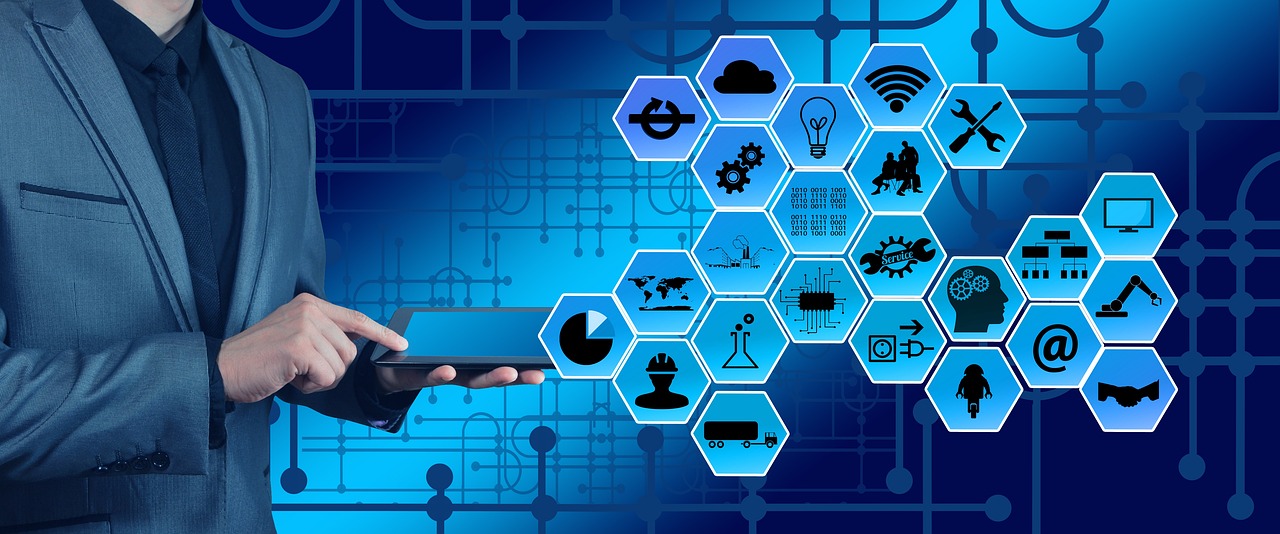
Emerging Surveillance Technologies
Surveillance plays a crucial role in counterinsurgency, acting as the eyes and ears of military operations in conflict zones. With the rise of , military forces are now equipped with tools that significantly enhance situational awareness and intelligence gathering. This is not just about having a bird's-eye view; it’s about transforming how data is collected, analyzed, and utilized to outsmart insurgent threats. Imagine being able to monitor vast areas in real-time, pinpointing insurgent movements with precision—this is the reality that modern surveillance technologies bring to the table.
One of the standout innovations in this field is drone technology. Drones have evolved from simple remote-controlled devices to sophisticated unmanned aerial vehicles (UAVs) equipped with high-resolution cameras and advanced sensors. These UAVs can fly over hostile territories, capturing detailed images and video feeds that provide invaluable intelligence. For instance, they can identify enemy positions, track movements, and even assess the damage after an operation. The ability to conduct aerial surveillance without putting personnel at risk is a game changer.
In addition to drones, satellite imaging has become increasingly important in counterinsurgency efforts. Satellites can capture images of vast areas, allowing military leaders to monitor changes over time. This capability is essential for understanding the dynamics of conflict zones. For example, satellite imagery can reveal the construction of new insurgent camps or the movement of troops, which can then inform strategic decisions. The integration of satellite data with ground intelligence creates a comprehensive picture of the battlefield.
Furthermore, the combination of drone technology and satellite imaging leads to enhanced real-time data analysis. When these technologies work in tandem, military commanders can receive immediate updates about the situation on the ground. This integration allows for a more agile response to emerging threats. Imagine a scenario where a drone identifies an insurgent gathering, and within moments, that information is relayed to ground troops who can act swiftly to neutralize the threat.
To illustrate the impact of these technologies, consider the following table that outlines the key features of emerging surveillance technologies:
| Technology | Key Features | Benefits |
|---|---|---|
| Drone Technology | High-resolution cameras, real-time video feed, GPS tracking | Reduced risk to personnel, detailed intelligence, rapid deployment |
| Satellite Imaging | Wide coverage area, historical data analysis, high-definition imagery | Long-term monitoring, strategic planning, identification of trends |
| Integrated Systems | Data fusion from drones and satellites, real-time updates | Improved situational awareness, agile response, enhanced decision-making |
In conclusion, the are not just tools; they are essential components of modern counterinsurgency strategies. By leveraging drones, satellites, and integrated systems, military forces can gain a significant advantage in understanding and responding to insurgent threats. As technology continues to evolve, we can expect even more innovative solutions that will redefine how surveillance is conducted in conflict zones.
- What are the main advantages of using drones in counterinsurgency?
Drones provide real-time intelligence, reduce the risk to personnel, and can cover large areas quickly, making them invaluable in monitoring insurgent activities. - How does satellite imaging contribute to military operations?
Satellite imaging allows for extensive surveillance over time, helping military leaders to identify trends and anticipate insurgent movements. - Can these technologies be used together?
Yes, the integration of drone and satellite data enhances situational awareness and allows for quicker, more informed decision-making in the field.

Data Analytics in Counterinsurgency
In today's fast-paced world, data analytics has emerged as a game-changer in the realm of counterinsurgency. Imagine having the ability to sift through mountains of data to uncover hidden patterns and predict insurgent movements. It’s like having a crystal ball that provides military leaders with insights that were once thought to be impossible to obtain. The utilization of big data in counterinsurgency operations not only enhances situational awareness but also significantly improves strategic planning.
One of the most fascinating aspects of data analytics is its ability to transform raw information into actionable intelligence. By analyzing various data sources, military leaders can gain a comprehensive understanding of insurgent behaviors and tactics. For instance, social media platforms, satellite imagery, and ground reports can be integrated to create a vivid picture of the operational environment. This integration allows commanders to make informed decisions, ultimately leading to more effective counterinsurgency strategies.
Moreover, the role of machine learning in data analytics cannot be overstated. Machine learning algorithms are adept at processing vast amounts of information quickly and efficiently. They can identify trends and anomalies that may not be immediately apparent to human analysts. This capability is invaluable in counterinsurgency, where the ability to anticipate enemy actions can mean the difference between success and failure. For example, if a pattern of movement is detected in a specific area, military planners can preemptively deploy resources to counter potential threats.
Predictive modeling is another crucial component of data analytics in counterinsurgency. By utilizing historical data, these models can forecast potential insurgent actions, thereby enhancing proactive measures in military strategies. Imagine being able to predict where an insurgent group is likely to strike next based on their past behaviors. This foresight allows military forces to allocate resources more effectively and prepare for possible attacks.
Take a look at the table below, which illustrates how predictive modeling can identify potential hotspots based on various factors:
| Factor | Impact Level | Predicted Activity |
|---|---|---|
| Historical Attacks | High | Increased likelihood of future attacks |
| Local Sentiment | Medium | Potential for recruitment |
| Resource Availability | Low | Decreased operational capacity |
This table highlights how various factors contribute to the likelihood of insurgent activity, enabling military planners to devise more targeted strategies.
Integrating real-time data is essential for operational success in counterinsurgency. In an age where information is constantly flowing, having systems in place that consolidate data from various sources is vital. Imagine a command center where information from drones, ground troops, and intelligence agencies is merged seamlessly to provide a comprehensive view of the battlefield. This real-time integration allows commanders to react swiftly to changing situations, ensuring that they are always one step ahead of insurgent forces.
In conclusion, the application of data analytics in counterinsurgency is not just a trend; it’s a necessity. As insurgent tactics evolve, so must the strategies to combat them. By leveraging big data, machine learning, predictive modeling, and real-time integration, military leaders can enhance their effectiveness and ultimately save lives. The future of counterinsurgency lies in the ability to harness the power of data, transforming it from mere numbers into a strategic asset.
- What is data analytics in counterinsurgency? Data analytics refers to the process of examining large datasets to uncover patterns, correlations, and insights that can inform military strategies against insurgent threats.
- How does machine learning contribute to counterinsurgency? Machine learning algorithms help process vast amounts of data quickly, identifying trends and anomalies that can predict insurgent movements and inform tactical decisions.
- What role does predictive modeling play? Predictive modeling uses historical data to forecast potential insurgent actions, allowing military planners to take proactive measures and allocate resources effectively.
- Why is real-time data integration important? Real-time data integration allows military commanders to consolidate information from various sources, providing up-to-date insights that enhance decision-making and operational success.

Machine Learning Applications
In the ever-evolving landscape of counterinsurgency, machine learning has emerged as a game-changer, fundamentally altering how military leaders analyze data and make tactical decisions. Imagine having the ability to sift through mountains of information in seconds, identifying patterns and predicting insurgent behaviors with astonishing accuracy. This is exactly what machine learning brings to the table.
At its core, machine learning involves the use of algorithms that can learn from and make predictions based on data. In the context of counterinsurgency, these algorithms are trained on vast datasets that include historical conflict data, social media activity, and even satellite imagery. The result? A sophisticated system that can anticipate insurgent movements and inform strategic planning.
For instance, consider a scenario where military analysts are trying to predict the next move of an insurgent group. By employing machine learning models, they can analyze various factors such as troop movements, local population behavior, and even weather conditions. This rich tapestry of data allows for the creation of highly accurate predictive models that can forecast potential threats. These models not only enhance situational awareness but also empower commanders to take proactive measures before a situation escalates.
One of the most exciting aspects of machine learning in counterinsurgency is its ability to adapt and improve over time. As more data is fed into the system, the algorithms become better at recognizing trends and anomalies. This continuous learning process ensures that military strategies remain relevant and effective in the face of rapidly changing insurgent tactics.
Moreover, machine learning applications can be integrated with real-time data feeds, providing a dynamic and responsive approach to counterinsurgency operations. For example, when a new threat is detected, the system can instantly analyze the situation, drawing on historical data to suggest the best course of action. This level of responsiveness can be the difference between success and failure in high-stakes environments.
In addition to predictive analytics, machine learning can also enhance image recognition capabilities. By training algorithms to identify specific patterns or objects in imagery, military personnel can quickly analyze reconnaissance footage from drones and satellites. This capability allows for rapid identification of insurgent hideouts or movement, significantly improving operational efficiency.
However, the integration of machine learning into counterinsurgency efforts is not without its challenges. Issues such as data privacy, algorithmic bias, and the ethical implications of automated decision-making must be carefully considered. As military organizations continue to embrace these technologies, striking a balance between innovation and responsibility will be crucial.
In summary, machine learning applications are revolutionizing how military leaders approach counterinsurgency. From predictive modeling to real-time data integration, these technologies offer unprecedented insights that enhance operational effectiveness. As we look to the future, the potential for machine learning to further shape military strategies is both exciting and full of possibilities.
- What is machine learning?
Machine learning is a subset of artificial intelligence that involves the use of algorithms to analyze data, learn from it, and make predictions or decisions based on that data.
- How is machine learning used in counterinsurgency?
Machine learning is used to analyze large datasets, predict insurgent movements, enhance image recognition, and improve decision-making processes in military operations.
- What are the benefits of using machine learning in military strategies?
The benefits include improved predictive capabilities, enhanced situational awareness, faster decision-making, and the ability to adapt to changing conditions on the ground.
- What challenges does machine learning face in military applications?
Challenges include concerns about data privacy, algorithmic bias, and the ethical implications of automated decision-making in high-stakes situations.
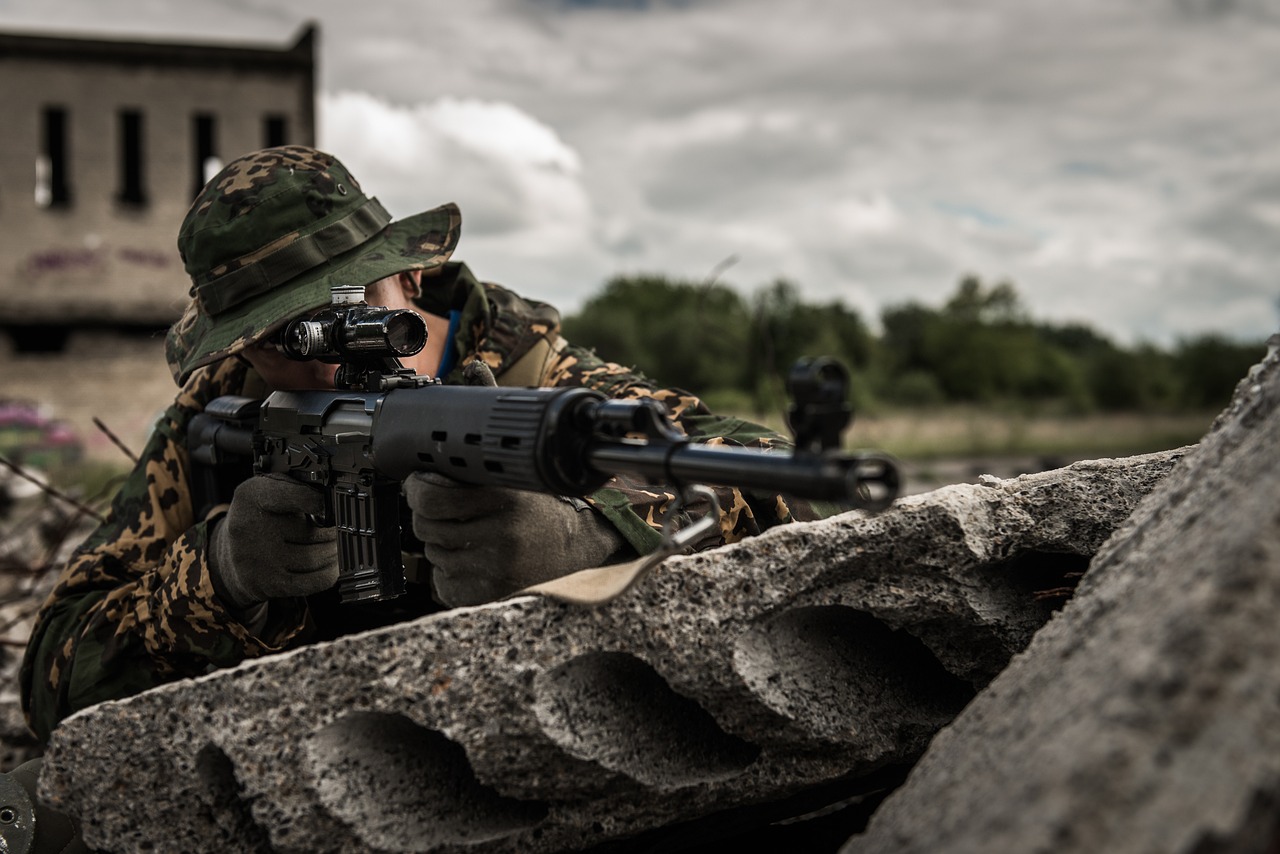
Predictive Modeling Techniques
Predictive modeling techniques are at the forefront of counterinsurgency strategies, providing military leaders with the ability to anticipate insurgent actions before they occur. Imagine having a crystal ball that not only reveals potential threats but also helps in crafting preemptive strategies to mitigate them. This is the power of predictive modeling, and it’s revolutionizing how we approach warfare in complex environments.
At its core, predictive modeling involves analyzing historical data to identify patterns and trends that can indicate future behaviors. By leveraging vast datasets, military analysts can create models that forecast insurgent movements, allowing for a more proactive stance in operations. For instance, if data shows that insurgent activity spikes during specific times of the year or in response to particular geopolitical events, commanders can adjust their strategies accordingly. This capability not only enhances situational awareness but also maximizes resource allocation, ensuring that troops are deployed where they are needed most.
One of the most compelling aspects of predictive modeling is its ability to integrate various data sources. This includes everything from satellite imagery and reconnaissance reports to social media activity and local communications. By synthesizing this information, models can provide a comprehensive view of the operational landscape. For example, a model might analyze social media sentiment in a conflict zone, identifying areas of unrest that could signal impending insurgent actions. The result? Commanders are equipped with timely insights that enable them to act decisively.
Moreover, the advent of machine learning has further enhanced predictive modeling techniques. These algorithms can process and analyze data at unprecedented speeds, identifying correlations that human analysts might overlook. For instance, machine learning can uncover subtle patterns in insurgent logistics or communication methods, providing a deeper understanding of their operational capabilities. This not only aids in immediate tactical decisions but also informs long-term strategic planning.
To illustrate the effectiveness of predictive modeling, consider the following table that outlines key components and their impacts:
| Component | Description | Impact on Counterinsurgency |
|---|---|---|
| Data Collection | Gathering historical and real-time data from various sources. | Improved accuracy in threat assessment. |
| Data Analysis | Utilizing algorithms to identify patterns and trends. | Enhanced ability to anticipate insurgent movements. |
| Model Simulation | Creating scenarios based on predictive data. | Informed decision-making and strategic planning. |
| Feedback Loop | Iterative process of refining models based on new data. | Continuous improvement in predictive accuracy. |
In conclusion, predictive modeling techniques are not just tools; they are essential components of modern counterinsurgency operations. By harnessing the power of data and advanced analytics, military leaders can stay one step ahead of insurgent threats. This proactive approach not only saves lives but also enhances the overall effectiveness of military strategies in an increasingly complex world.
- What is predictive modeling? Predictive modeling is a statistical technique used to forecast future outcomes based on historical data.
- How does predictive modeling benefit counterinsurgency efforts? It helps military leaders anticipate insurgent actions, allowing for proactive strategies to mitigate threats.
- What role does machine learning play in predictive modeling? Machine learning enhances predictive modeling by processing large datasets quickly and identifying patterns that inform tactical decisions.
- Can predictive modeling integrate multiple data sources? Yes, it can synthesize data from various sources, including social media, satellite imagery, and local communications, for a comprehensive operational view.

Real-time Data Integration
In the fast-paced world of counterinsurgency, has become a game-changer. Imagine being in a high-stakes chess match, where every move counts, and the opponent is constantly shifting strategies. This is the reality faced by military commanders dealing with insurgent threats. The ability to gather, analyze, and act on information in real-time can mean the difference between success and failure on the battlefield.
At the heart of this innovation is the integration of various data sources, which allows for a comprehensive view of the operational environment. These systems pull information from satellite imagery, drone surveillance, and even social media feeds, creating a rich tapestry of intelligence that commanders can use to make informed decisions. By consolidating data from multiple channels, military leaders can quickly assess the situation and adapt their strategies accordingly.
One of the most significant advantages of real-time data integration is its ability to provide situational awareness. For instance, consider a scenario where insurgents are planning an attack. With real-time data integration, military forces can detect unusual movements or communication patterns that might indicate an impending threat. This proactive approach not only enhances the safety of personnel but also allows for preemptive strikes that can neutralize threats before they escalate.
Moreover, the integration of real-time data fosters collaboration among different military branches and allied forces. When everyone is on the same page, sharing insights and updates, the operational effectiveness increases exponentially. The use of advanced software platforms enables seamless communication and coordination, ensuring that all units are equipped with the latest intelligence. This collaborative environment is crucial in counterinsurgency operations, where every second counts.
To illustrate the impact of real-time data integration, consider the following table that summarizes its key benefits:
| Benefit | Description |
|---|---|
| Enhanced Situational Awareness | Immediate access to critical information allows for quick decision-making. |
| Proactive Threat Detection | Identifying potential threats before they materialize reduces risks. |
| Improved Collaboration | Facilitates communication among different military branches and allies. |
| Streamlined Operations | Integrates data from various sources for a comprehensive operational overview. |
In conclusion, real-time data integration is not just a technological advancement; it's a strategic necessity in modern counterinsurgency operations. With the ability to harness and analyze data on the fly, military leaders can stay one step ahead of insurgents, making informed decisions that ultimately lead to greater success in the field. As technology continues to evolve, the potential for even more sophisticated data integration systems will only enhance military effectiveness and operational success.
- What is real-time data integration?
Real-time data integration refers to the process of combining data from various sources as it becomes available, allowing for immediate analysis and decision-making. - How does real-time data integration benefit military operations?
It enhances situational awareness, enables proactive threat detection, improves collaboration among forces, and streamlines operations. - What technologies are used for real-time data integration?
Technologies include satellite imaging, drone surveillance, advanced software platforms, and data analytics tools. - Can real-time data integration prevent attacks?
Yes, by identifying unusual patterns and movements, it allows military forces to anticipate and neutralize threats before they escalate.

Cybersecurity Measures
In today's digital battlefield, cybersecurity has emerged as a cornerstone of effective counterinsurgency strategies. As military operations increasingly rely on technology and communication networks, the risk of cyber threats from insurgent groups has escalated dramatically. This necessitates a robust framework of cybersecurity measures designed to protect sensitive information and ensure operational integrity. Just like a fortress protects its inhabitants, effective cybersecurity shields military communications from prying eyes and malicious attacks.
One of the primary innovations in cybersecurity for counterinsurgency is the development of advanced encryption technologies. These tools are essential for safeguarding classified communications, ensuring that only authorized personnel can access critical information. Imagine sending a message that only the intended recipient can decode—this is the essence of encryption. It acts as a protective barrier, much like a secret language that keeps adversaries in the dark.
Moreover, the integration of artificial intelligence (AI) in cybersecurity systems has proven to be a game-changer. AI algorithms can analyze vast amounts of data in real-time, identifying potential threats before they escalate. This proactive approach allows military leaders to stay one step ahead of insurgent cyber strategies. For instance, AI can detect unusual patterns in network traffic that might indicate a breach, alerting commanders to take immediate action.
Another critical aspect of cybersecurity measures is the establishment of incident response teams. These specialized units are trained to respond swiftly to cyber incidents, minimizing damage and restoring systems to operational status. Their role is akin to that of firefighters in a blaze—they jump into action, extinguishing threats before they can spread. In a world where every second counts, having an agile incident response team can make all the difference.
Furthermore, military organizations are investing in cybersecurity training programs for personnel. Educating troops about potential cyber threats and best practices for online security is vital. Just as soldiers are trained in combat tactics, they must also be equipped with the knowledge to navigate the digital landscape safely. This training includes understanding phishing attacks, secure password practices, and recognizing social engineering tactics that insurgents might employ.
To illustrate the importance of these measures, consider the following table that outlines various cybersecurity strategies and their purposes:
| Cybersecurity Strategy | Purpose |
|---|---|
| Encryption | Protects sensitive communications from unauthorized access. |
| AI Threat Detection | Identifies and mitigates cyber threats in real time. |
| Incident Response Teams | Respond quickly to cyber incidents to minimize damage. |
| Training Programs | Educates personnel on cybersecurity best practices. |
In essence, the landscape of counterinsurgency is evolving, and with it, the need for comprehensive cybersecurity measures. These innovations not only enhance military effectiveness but also ensure that forces can operate confidently in an increasingly interconnected world. As insurgent tactics become more sophisticated, so too must the defenses that protect against them. In this ongoing battle, cybersecurity is not just an option; it is a necessity, ensuring that military operations remain secure and resilient against the ever-present threat of cyber warfare.
- What are the main threats to military cybersecurity? Insurgent groups may employ phishing, malware, and hacking attempts to gain access to sensitive military information.
- How does AI improve cybersecurity in military operations? AI can analyze data patterns to detect anomalies and potential threats, allowing for quicker responses to cyber incidents.
- Why is training important for military personnel regarding cybersecurity? Training helps personnel recognize and respond to cyber threats effectively, reducing the risk of breaches.
- What role do incident response teams play in cybersecurity? They are responsible for quickly addressing and mitigating cyber incidents to minimize impact on operations.

Robotics and Autonomous Systems
In today’s fast-paced world, the integration of robotics and autonomous systems into counterinsurgency operations is nothing short of revolutionary. These technologies are not just enhancing military effectiveness; they are redefining the very nature of warfare. Imagine a battlefield where decisions are made with the precision of algorithms and the speed of machines. Sounds futuristic, right? Yet, this is the reality we are stepping into. The deployment of unmanned vehicles and drones is transforming how military forces engage with insurgent threats, making operations safer and more efficient.
One of the standout innovations has been the use of Unmanned Aerial Vehicles (UAVs). These flying machines are not only capable of gathering intelligence but can also conduct targeted strikes against insurgent positions. Picture a drone soaring high above a conflict zone, equipped with sophisticated sensors that can detect movement and relay real-time information back to commanders on the ground. This capability allows for a level of situational awareness that was unimaginable just a few decades ago. UAVs can operate in environments that are too dangerous for human soldiers, thus reducing the risk of casualties while maintaining operational effectiveness.
But it’s not just the skies that are being revolutionized. Ground robotics are also making significant strides in counterinsurgency efforts. These machines can perform a variety of tasks, from bomb disposal to surveillance and logistical support. Imagine a robotic unit that can safely neutralize explosive devices, allowing human personnel to focus on strategy rather than risk. This technology is crucial in environments where every second counts and the margin for error is razor-thin. By employing ground robotics, military operations can achieve greater efficiency while minimizing the potential for human error.
Moreover, the synergy between UAVs and ground robotics creates a comprehensive operational framework. For instance, while drones gather aerial intelligence, ground robots can be deployed to investigate suspicious activities or secure areas based on the data received. This interconnectedness enhances the overall effectiveness of military strategies, enabling forces to respond swiftly and accurately to emerging threats.
As we venture further into this era of technological advancement, it’s essential to address the ethical implications and operational challenges that come with deploying these systems. Questions arise about the autonomy of machines in combat situations, the potential for unintended consequences, and the need for robust cybersecurity measures to protect these systems from insurgent cyber threats. The balance between leveraging technology for military advantage and ensuring ethical standards is a conversation that must continue as we embrace these innovations.
In conclusion, the integration of robotics and autonomous systems into counterinsurgency operations is reshaping the battlefield. With UAVs and ground robotics enhancing surveillance, logistics, and combat capabilities, military forces are better equipped to tackle insurgent threats. As these technologies evolve, so too will the strategies employed to maintain peace and security in conflict zones.
- What are UAVs and how are they used in counterinsurgency?
UAVs, or Unmanned Aerial Vehicles, are drones that are used for intelligence gathering and targeted strikes. They can operate in dangerous environments without risking human lives. - How do ground robotics contribute to military operations?
Ground robotics can perform various tasks such as bomb disposal and surveillance, significantly reducing the risks faced by personnel in combat zones. - What are the ethical concerns surrounding the use of autonomous systems?
The use of autonomous systems raises questions about decision-making in combat, potential unintended consequences, and the need for cybersecurity to protect these technologies.
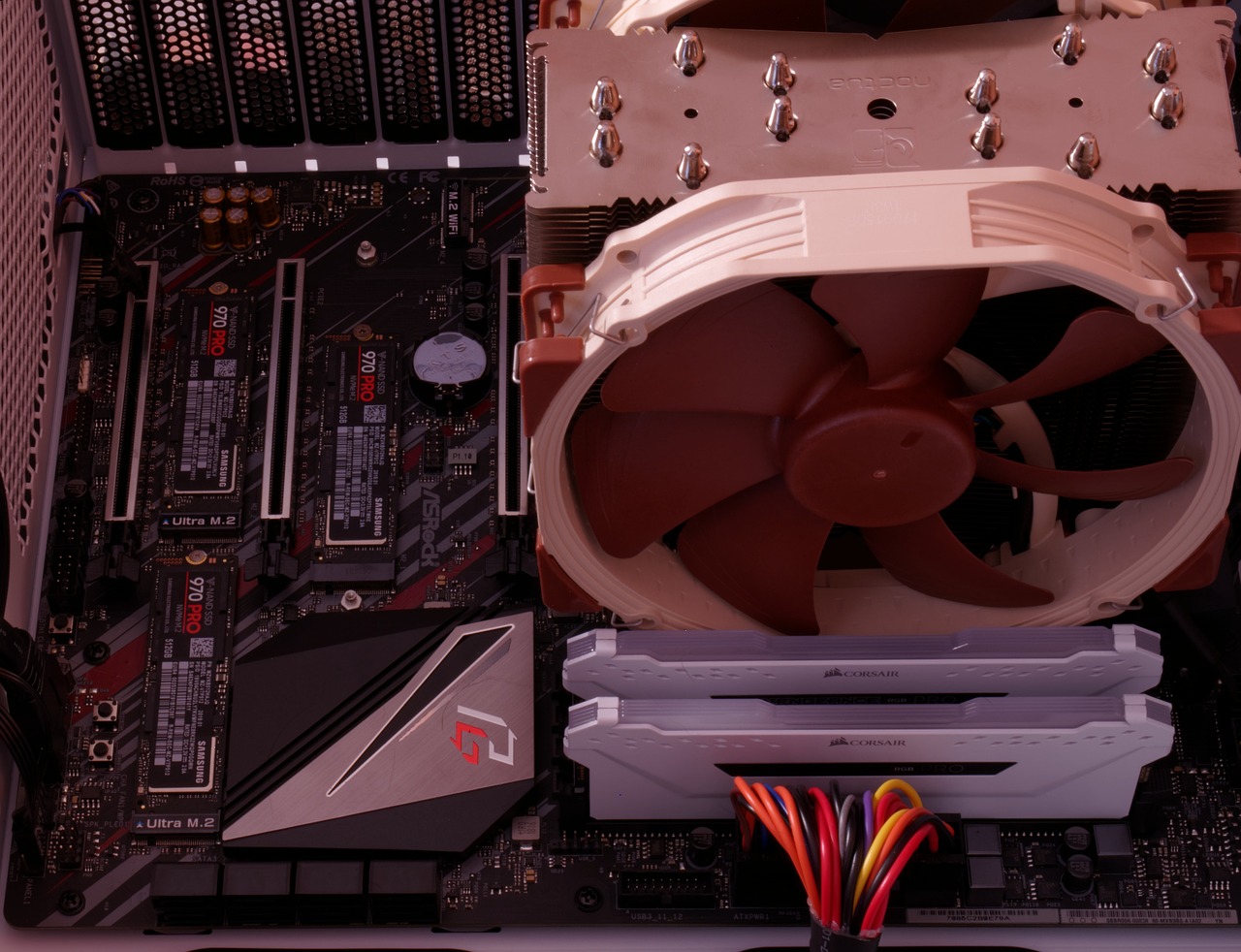
Unmanned Aerial Vehicles (UAVs)
Unmanned Aerial Vehicles, commonly known as UAVs, have become a cornerstone of modern military operations, particularly in counterinsurgency efforts. These sophisticated flying machines are not just toys for tech enthusiasts; they represent a significant leap in how military forces gather intelligence, conduct reconnaissance, and engage in combat. Imagine having a bird's-eye view of a conflict zone without putting any personnel at risk—this is precisely what UAVs offer. Their versatility allows them to adapt to various roles, making them invaluable assets in the fight against insurgent threats.
One of the most compelling aspects of UAVs is their ability to perform missions that would be too dangerous or impractical for manned aircraft. They can stay airborne for extended periods, capturing high-resolution imagery and real-time data that enhance situational awareness. This capability is crucial when dealing with elusive insurgent groups that often operate in challenging terrains. By utilizing UAVs, military commanders can gain insights into enemy movements, supply routes, and potential hideouts, allowing for more informed tactical decisions.
Moreover, UAVs can be equipped with an array of advanced technologies, including:
- High-Resolution Cameras: These allow for detailed surveillance and intelligence gathering.
- Infrared Sensors: They enable operations during low visibility conditions, such as nighttime or adverse weather.
- Electronic Warfare Capabilities: Some UAVs can disrupt enemy communications, giving military forces a strategic advantage.
Additionally, UAVs can conduct targeted strikes against insurgent positions with precision, minimizing collateral damage. This capability is particularly important in urban environments where civilians are often in close proximity to insurgent targets. By using UAVs for strikes, military forces can significantly reduce the risk of civilian casualties, which is crucial for maintaining local support and legitimacy in counterinsurgency operations.
However, the deployment of UAVs is not without its challenges. Issues such as cybersecurity threats and the potential for misuse raise ethical and operational questions. As these technologies advance, military forces must also adapt their strategies to mitigate risks associated with UAV operations. Training operators to effectively manage these systems while understanding the complexities of the environments they operate in is essential for maximizing their potential.
In summary, UAVs are revolutionizing counterinsurgency strategies by providing unparalleled intelligence, surveillance, and combat capabilities. Their ability to operate in high-risk situations without endangering personnel is a game-changer, allowing military forces to maintain an upper hand in complex conflict scenarios. As technology continues to evolve, the role of UAVs in military operations is only expected to grow, further enhancing the effectiveness of counterinsurgency efforts worldwide.
Q1: What are UAVs primarily used for in counterinsurgency?
A1: UAVs are primarily used for intelligence gathering, surveillance, reconnaissance, and targeted strikes against insurgent positions. Their ability to operate without risking human lives makes them invaluable in conflict zones.
Q2: How do UAVs enhance situational awareness?
A2: UAVs provide real-time data and high-resolution imagery, allowing military commanders to monitor enemy movements and assess the battlefield dynamically. This enhanced situational awareness is critical for making informed tactical decisions.
Q3: Are there any ethical concerns associated with UAV usage?
A3: Yes, there are several ethical concerns, including the potential for civilian casualties during strikes, issues of accountability, and the risk of misuse. Military forces must navigate these challenges while employing UAV technology responsibly.

Ground Robotics
Ground robotics are rapidly becoming a game-changer in the realm of counterinsurgency operations. Imagine a world where robots can navigate treacherous terrains, defuse explosives, and gather intelligence without putting human lives at risk. This isn't science fiction; it's the reality of modern warfare. These advanced robotic systems are designed not just to assist but to enhance the capabilities of military personnel in ways that were previously unimaginable.
One of the most significant advantages of ground robotics is their ability to operate in hazardous environments. For instance, when it comes to bomb disposal, robotic units equipped with specialized tools can safely assess and neutralize threats. This not only protects soldiers but also minimizes collateral damage in civilian areas, which is crucial in counterinsurgency efforts where winning hearts and minds is just as important as military success.
Additionally, ground robotics are equipped with various sensors and cameras that allow them to gather real-time data from the battlefield. This information is invaluable for commanders who need to make quick decisions based on the latest intelligence. The integration of robotics into ground operations creates a synergy that enhances situational awareness and operational effectiveness.
Moreover, these robotic systems can be used for logistical support, transporting supplies and equipment to remote locations. This function is particularly beneficial in areas where traditional supply routes may be compromised or too dangerous for human transport. By utilizing ground robotics for logistics, military forces can maintain their operational tempo and ensure that troops have the resources they need to succeed.
To illustrate the capabilities of ground robotics, let’s take a look at some of the common applications:
- Bomb Disposal: Robotic units can safely handle and disarm explosives, mitigating risks to personnel.
- Surveillance: Ground robots can monitor enemy movements and gather intelligence without exposing soldiers to danger.
- Logistical Support: These robots can transport supplies, ensuring timely delivery in challenging environments.
As we continue to witness advancements in technology, the role of ground robotics in counterinsurgency will only expand. The future might even see the development of more autonomous systems capable of making decisions based on artificial intelligence, further reducing risks to human soldiers. The integration of these technologies not only enhances military effectiveness but also sets a new standard for operational safety and efficiency.
- What are ground robotics? Ground robotics refer to unmanned systems designed to perform various tasks on the battlefield, including surveillance, bomb disposal, and logistics.
- How do ground robots enhance military operations? They reduce the risk to human life, improve situational awareness, and ensure efficient logistics in challenging environments.
- Are ground robotics equipped with artificial intelligence? Many modern ground robots utilize AI to process information and make decisions in real-time, enhancing their effectiveness.
Frequently Asked Questions
- What are the key innovations in counterinsurgency technologies?
Counterinsurgency technologies have seen remarkable advancements, particularly in surveillance, data analytics, and robotics. Innovations such as drone technology and satellite imaging significantly enhance situational awareness, while big data applications help military leaders understand insurgent patterns and predict their movements.
- How do emerging surveillance technologies improve military effectiveness?
Emerging surveillance technologies, like UAVs and advanced satellite systems, provide real-time intelligence and situational awareness. This allows military forces to monitor insurgent activities more effectively, leading to informed decision-making and enhanced operational success in conflict zones.
- What role does data analytics play in counterinsurgency?
Data analytics is a game-changer in counterinsurgency, transforming how military leaders analyze insurgent behavior. By utilizing big data, they can identify trends and make predictions about insurgent movements, which aids in strategic planning and resource allocation.
- Can machine learning be applied in counterinsurgency operations?
Absolutely! Machine learning algorithms analyze vast amounts of data to uncover patterns that human analysts might miss. This technology helps in identifying potential threats and informs tactical decisions, making operations more effective and efficient.
- What are predictive modeling techniques, and how do they work?
Predictive modeling techniques use historical data to forecast future insurgent actions. By analyzing past behaviors, military strategists can anticipate potential threats, allowing them to take proactive measures and enhance their operational readiness.
- How important is real-time data integration in military operations?
Real-time data integration is crucial for operational success. It consolidates information from various sources, providing commanders with up-to-date insights that facilitate timely and effective decision-making, especially in dynamic conflict environments.
- What cybersecurity measures are being implemented in counterinsurgency?
In the face of increasing cyber threats, innovative cybersecurity measures are essential. These include advanced encryption techniques and secure communication protocols to protect military data and communications from insurgent attacks, ensuring operational integrity.
- How are robotics and autonomous systems used in counterinsurgency?
Robotics and autonomous systems are revolutionizing counterinsurgency by providing capabilities in surveillance, logistics, and combat scenarios. Unmanned vehicles and drones enhance operational efficiency while minimizing risks to personnel in hazardous environments.
- What is the role of unmanned aerial vehicles (UAVs) in modern warfare?
UAVs are integral to modern warfare, serving multiple functions such as intelligence gathering, reconnaissance, and conducting targeted strikes against insurgent positions. Their versatility and effectiveness make them a vital asset in counterinsurgency operations.
- How do ground robotics enhance operational capabilities?
Ground robotics play a significant role in enhancing operational capabilities by performing tasks like bomb disposal, surveillance, and logistical support. This technology reduces the risk to personnel while improving the efficiency of military operations in dangerous environments.


